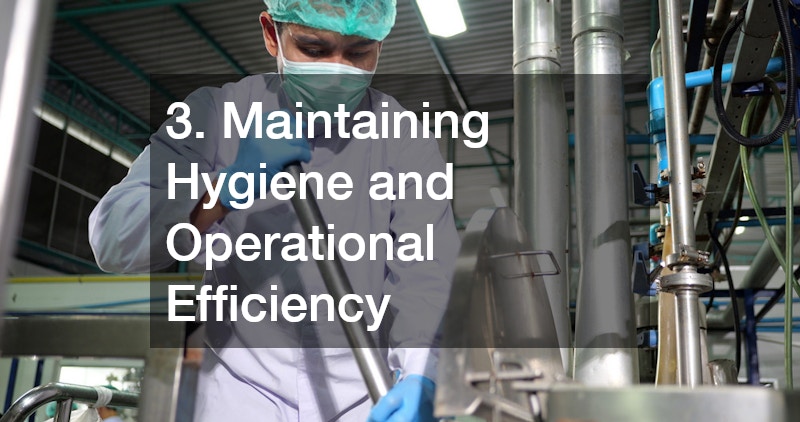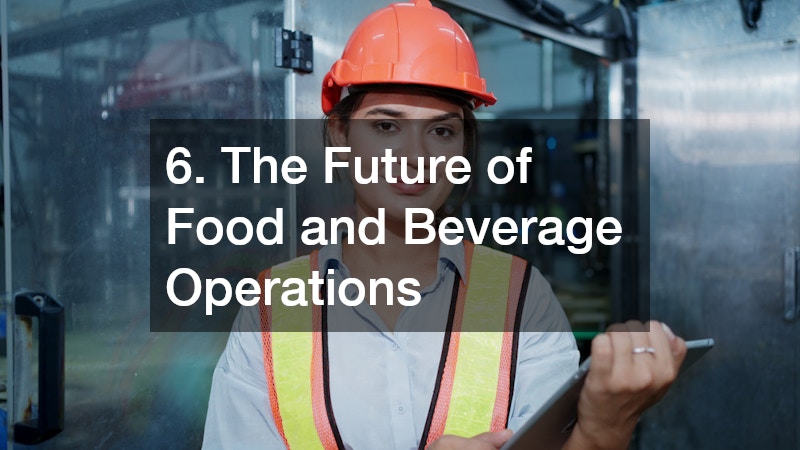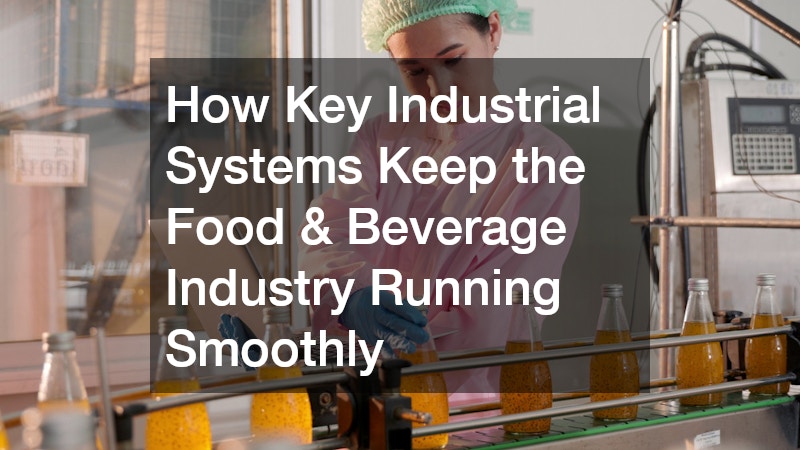When we think about the food on our table, our minds often go straight to the farms, the chefs, or the brands that fill the supermarket shelves. But behind every meal lies an intricate web of machines, systems, and logistics working around the clock to keep everything fresh, safe, and consistent. The food and beverage industry depends on a precise balance of technology and human expertise—an ecosystem where timing, temperature, and quality control are everything.
From the moment ingredients leave the farm to the instant a finished product reaches your plate, dozens of processes happen invisibly. This seamless coordination is what defines fresh food logistics, the backbone of how perishable goods are moved efficiently while maintaining strict safety standards. Refrigerated fleets, advanced monitoring systems, and specialized handling procedures all work together to ensure that quality never dips during transit.
At the same time, reliable storage facilities play a critical role in bridging production and distribution. These spaces aren’t just warehouses—they’re highly controlled environments that regulate humidity, temperature, and cleanliness to preserve freshness and prevent spoilage. From climate-controlled produce storage to deep-freeze areas for frozen foods, each facility functions as a vital link in the larger supply chain. Without these behind-the-scenes systems, food safety, shelf life, and consumer trust would all be at risk.
1. Ensuring Quality from Farm to Shelf

Food safety starts long before anything reaches a grocery aisle. Maintaining product quality across miles of transportation and hours of storage is a complex process that demands coordination between technology and operations. Farmers, distributors, and manufacturers rely on a continuous chain of temperature-controlled environments to prevent spoilage and contamination. This “cold chain” is what ensures that a carton of milk, a bag of frozen vegetables, or a shipment of seafood arrives fresh and safe to eat.
The Role of the Cold Chain
A crucial part of that cold chain is reefer transportation, which uses refrigerated trucks and containers to maintain consistent temperatures from origin to destination. These vehicles act as mobile cold rooms, keeping goods stable even through long-distance hauls and fluctuating weather conditions. Every delivery depends on this precision—one minor temperature deviation can compromise an entire shipment. To keep fleets running efficiently, operators also bulk fuel supplies, ensuring uninterrupted service during peak demand seasons or extended routes. Without dependable fueling and refrigeration, maintaining the integrity of perishable items would be impossible.
Tracking and Monitoring for Consistency
Quality assurance involves tracking and monitoring each stage of delivery. Smart sensors and data logging systems help operators maintain precise conditions and alert teams immediately when something drifts from the acceptable range. It’s a proactive approach to safety rather than a reactive one. The result? Greater consistency and fewer costly recalls or product losses.
Building Trust Through Infrastructure and Transparency
Consumers today are more aware than ever of where their food comes from. Businesses are responding by improving traceability. Advanced monitoring systems can now provide detailed information about every step of a product’s journey—from farm to shelf. This transparency not only protects public health but also strengthens trust between brands and their customers.
While technology helps with monitoring, physical infrastructure is just as critical. Reliable storage facilities, well-maintained delivery vehicles, and sturdy packaging all contribute to keeping perishable goods in top condition. Even small inefficiencies—like a poorly sealed container or a delayed shipment—can have major effects on freshness and safety.
2. Precision in Processing and Packaging

Inside food and beverage plants, the focus shifts from transport to transformation. Here, raw ingredients are turned into finished goods through a series of carefully calibrated processes. Consistency and precision are non-negotiable; one misstep in temperature, pressure, or timing can compromise an entire batch. Everything from the movement of ingredients to the final packaging relies on smooth coordination between mechanical systems and skilled technicians.
Essential Equipment for Accuracy
Among the essential equipment powering these operations are air compressors, which supply clean, pressurized air used in a wide range of applications—from pneumatic controls to automated filling and sealing machines. These systems ensure that each container is filled accurately and hygienically, without direct human contact, which helps maintain product purity. Similarly, commercial pumping systems are responsible for transporting liquids such as milk, juices, or sauces through the production line. Their precision prevents waste, minimizes contamination, and keeps production continuous even during high-demand periods.
Some beverage manufacturing processes also depend on specialized filtration and purification technologies. A molecular sieve is often used to remove moisture or impurities in gases like carbon dioxide, ensuring that carbonation processes remain clean and consistent. These fine details might go unnoticed by consumers, but they play a major role in ensuring that every product meets safety and quality standards.
Streamlining Production Lines
Efficiency is key in food production. Modern facilities rely on interconnected machines that communicate seamlessly, keeping lines moving and reducing downtime. Automation allows for real-time adjustments—whether that’s increasing output during peak demand or pausing for maintenance without halting an entire shift. This adaptability is vital for meeting customer expectations and managing costs.
Packaging as the Final Guardian of Quality
Packaging does more than make products look appealing; it’s also a vital safeguard. The right materials and sealing methods preserve freshness and protect food from external contaminants. Innovations in eco-friendly materials are adding another layer of complexity, as manufacturers seek packaging that maintains safety while reducing environmental impact.
3. Maintaining Hygiene and Operational Efficiency

Cleanliness is the cornerstone of the food and beverage industry. A single lapse in sanitation can lead to contamination, costly recalls, and damaged reputations. That’s why hygiene isn’t treated as a one-time task but as a continuous process built into every stage of production. Strict cleaning protocols ensure that every surface, pipe, and machine component remains free from buildup or microbial growth, even after long production cycles.
Advanced Cleaning Methods
From automated cleaning systems to specialized sanitation teams, companies invest heavily in maintaining spotless environments. Some even partner partner with a dry ice blasting company to handle deep-cleaning tasks that traditional methods can’t easily address. Dry ice blasting uses frozen carbon dioxide pellets to remove residue, grease, and contaminants from equipment without introducing water or harsh chemicals—ideal for sensitive areas like electrical panels or processing lines. This non-abrasive method helps plants meet stringent hygiene standards while minimizing downtime between production runs.
Designing for Cleanability
The equipment used in processing facilities must be durable enough to withstand frequent washdowns, high-pressure cleaning, and chemical disinfectants—all without losing performance. Modern equipment is designed with hygiene in mind: smooth surfaces, minimal crevices, and easily removable components make it easier to sanitize effectively. Facilities also plan workflows to separate raw and finished products, reducing the risk of cross-contamination. These design principles may seem subtle, but they’re what enable consistent, safe output on a massive scale.
Efficiency Through Maintenance and Training
Keeping operations running smoothly also depends on maintenance and skilled personnel. Regular inspections, scheduled servicing, and employee training prevent unexpected breakdowns and extend equipment life. When machines operate efficiently, energy use decreases and output increases—two outcomes every manufacturer values. A culture of preventive care pays off not only in reliability but also in long-term cost savings.
4. Supporting Equipment and Logistics Operations
Beyond production floors, an entire world of logistics and support equipment keeps the supply chain moving. Warehouses, transport hubs, and distribution centers are constantly in motion, with goods being lifted, stacked, cooled, and shipped in precise coordination.
Material Handling in Motion
Inside storage and distribution facilities, mechanical handling systems streamline movement. Equipment like forklifts plays a vital role in transporting pallets of ingredients, packaged goods, and supplies across vast warehouse spaces. Their reliability ensures that perishable products move efficiently from cold storage to loading docks without delays. The efficiency of these systems determines how fast orders reach retailers and restaurants—and ultimately, consumers. When everything works as planned, products spend less time in storage and more time where they belong: on store shelves or in customers’ hands.
The Human Factor
While automation plays a growing role, skilled technicians remain indispensable. Among them, forklift mechanics are crucial in keeping material-handling fleets running at peak performance. They perform essential diagnostics, repairs, and preventive maintenance that minimize downtime and prevent costly delays. Alongside other maintenance staff, these professionals ensure that every piece of machinery—from heavy lifters to cooling systems—operates safely and effectively. These experts are the quiet heroes who keep facilities running smoothly, even when challenges arise.
5. Ensuring Energy Efficiency and Sustainability
The food and beverage sector is energy-intensive by nature. It relies on heating, cooling, and mechanical systems that run nearly nonstop, from production lines and refrigeration units to ventilation and transport. Managing these energy demands effectively is critical not only for cost control but also for environmental responsibility. In recent years, the industry has made significant strides toward reducing its environmental footprint without sacrificing operational performance or product quality.
Innovations in Energy Management
Modern facilities are embracing energy-monitoring systems that provide real-time data on electricity, gas, and water usage. These systems allow managers to identify inefficiencies, predict peak demand periods, and make adjustments to minimize waste. Technologies like variable-speed motors, energy-recovery systems, and upgraded insulation help cut energy consumption significantly. Even seemingly small adjustments—like switching to LED lighting, optimizing refrigeration cycles, or using heat recovery from production processes—can lead to substantial savings across multiple facilities.
Many companies are also exploring advanced energy storage and microgrid systems, which help buffer fluctuations in energy demand and ensure consistent power for critical equipment. These initiatives not only reduce operational costs but also improve reliability, which is vital in an industry where even minor interruptions can impact product quality and safety.
Sustainable Choices Beyond the Factory Floor
Sustainability extends beyond production. Companies are rethinking packaging, transportation, and storage practices to reduce environmental impact. Lightweight packaging, recyclable materials, and optimized delivery routes help lower carbon emissions while reducing waste. Some businesses are experimenting with reusable containers for distribution, and others are incorporating bio-based materials to replace conventional plastics.
Additionally, renewable energy adoption is becoming increasingly common. Solar panels, wind turbines, and other clean energy sources help power facilities, reduce reliance on fossil fuels, and demonstrate corporate responsibility. These initiatives resonate with eco-conscious consumers and strengthen brand loyalty while positioning companies as forward-thinking leaders in sustainability.
By integrating energy efficiency and sustainable practices into every part of the operation—from production to logistics—food and beverage companies are creating a blueprint for a more responsible and resilient industry.
6. The Future of Food and Beverage Operations

The pace of change in the food and beverage industry is accelerating. Rapid advancements in technology, rising consumer expectations, and complex global supply chains are driving a new era of innovation. Tomorrow’s food systems will look vastly different from today’s, characterized by greater connectivity, higher efficiency, and data-driven decision-making.
Automation and Smart Technologies
Smart factories are no longer just a concept—they are becoming a reality. Automated systems, robotics, and machine learning are transforming how companies manage production schedules, inventory, and quality assurance. Predictive maintenance tools now analyze sensor data to anticipate equipment issues before they lead to downtime, ensuring smoother operations and fewer disruptions.
Connected technologies also allow for more precise control over product consistency and safety. Data collected from sensors throughout the production line can track temperature, humidity, and processing conditions in real time. Managers can use this information to make instant adjustments, ensuring every batch meets the highest standards. This intelligent automation enhances efficiency while reinforcing the industry’s commitment to food safety.
Resilience Through Innovation
Recent global disruptions—ranging from extreme weather events to supply chain interruptions—have highlighted the need for resilience in food and beverage operations. Companies are investing in flexible infrastructure capable of adapting quickly to changing circumstances. This could involve scaling production up or down, sourcing alternative suppliers, or implementing remote monitoring and control systems.
Innovation is also shaping logistics and distribution. Predictive analytics can forecast demand fluctuations, while advanced inventory management helps minimize waste and ensure timely deliveries. By combining agility with cutting-edge technology, companies can respond swiftly to market pressures, regulatory changes, and consumer demands.
Sustainability Meets Technology
Looking forward, sustainability and technology are increasingly intertwined. Energy-efficient equipment, smart monitoring, and digital tools are enabling companies to reduce their carbon footprint while maintaining productivity. Future operations will likely leverage AI and IoT technologies to optimize energy consumption, streamline supply chains, and improve traceability from farm to shelf.
Ultimately, the most successful food and beverage operations will be those that integrate innovation, efficiency, and sustainability into every aspect of their business. By doing so, they will be better positioned to meet consumer expectations, navigate global challenges, and deliver safe, high-quality products consistently.
In Summary
Every stage of the food and beverage journey relies on an invisible network of machines, systems, and skilled people. From the farm to the factory, from the warehouse to the delivery truck, countless components work together to ensure the food we eat is safe, fresh, and available whenever we need it.
It’s easy to overlook the complexity behind a simple meal, but this unseen infrastructure is what makes modern food production possible. The combination of precise engineering, careful planning, and continuous improvement ensures that consumers can trust the products they buy every day. As technology continues to evolve, this network will only grow more sophisticated—quietly powering the world’s most essential industry, one meal at a time.
